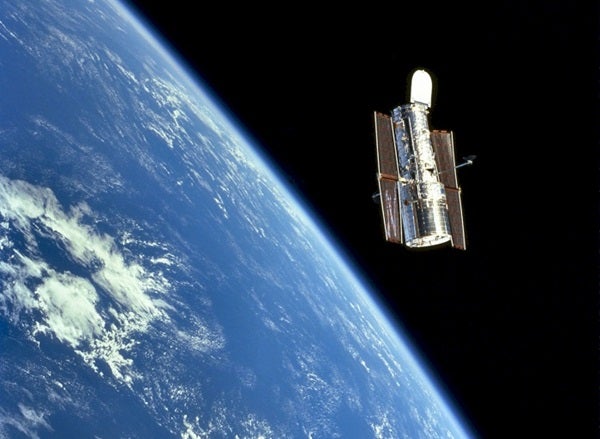February 8, 2005
NASA’s budget request for 2006 contains no money for any repair or servicing of the Hubble Space Telescope (HST). Of the $93 million proposed for HST, $75 million would go to develop a robotic mission to bring down the telescope, “when its service life has concluded,” outgoing NASA administrator Sean O’Keefe said February 7 while presenting the agency’s 2006 budget to the media.
Explaining the HST figures, O’Keefe pointed to the December 2004 report by the U.S. National Academy of Sciences that said a robotic fix for Hubble was “risky” and unlikely to be ready before Hubble failed. O’Keefe said he felt this conclusion was overly pessimistic. But he noted the report created an “incredibly difficult hill to climb” for anyone arguing for a robotic mission. Turning to the idea of a manned servicing flight, O’Keefe said that the technical challenges NASA is facing in returning shuttles to flight “make it very, very difficult to see any path” for a shuttle mission to HST.
The conclusion, O’Keefe said, was that NASA should let HST run out its baseline mission. The agency would, he noted, do what could be done to extend the telescope’s life, and he mentioned that engineers had devised a way to do science with HST using just two gyroscopes.
O’Keefe mentioned that NASA’s design review of Hubble servicing, due to be completed in March, would study every robotic mission possibility. “All options are on the table,” O’Keefe said. “Maybe there’ll be an epiphany.”
Overall, the proposed NASA budget for 2006 stands at $16.5 billion, a 2.4-percent increase over last year. Projected increases for the next few years range 2 to 3 percent per year. Various programs received increases: $858 million (+17 percent) for robotic exploration of Mars and the Moon, and $372 million (+19 percent) for continued development of the James Webb Space Telescope “on pace for a 2011 launch,” according to NASA.
Other areas got mixed outcomes. Project Prometheus, a program to develop a nuclear power generator, received $320 million, down from $432 million last year. In addition, the Jupiter Icy Moons Orbiter (JIMO), intended as a high-profile demonstration mission of Prometheus technology, has been “rephased” — basically cancelled, as NASA is now seeking a less-ambitious demo mission.
The proposed NASA budget now goes to Congress, which will make changes, although how many and in what areas are yet undetermined. At the very least, Congress is likely to hear from Hubble’s supporters, and under public prodding, it might well direct NASA to extend Hubble’s service life.
Another unknown is who will replace Sean O’Keefe, who leaves NASA to become chancellor of Louisiana State University February 21. His successor will inherit a NASA that saw a real, if small, increase during a budget year that brought decreases for many government departments.
Two big, early tests loom: getting the space shuttles flying again, and how he or she will handle the question of Hubble’s fate.










